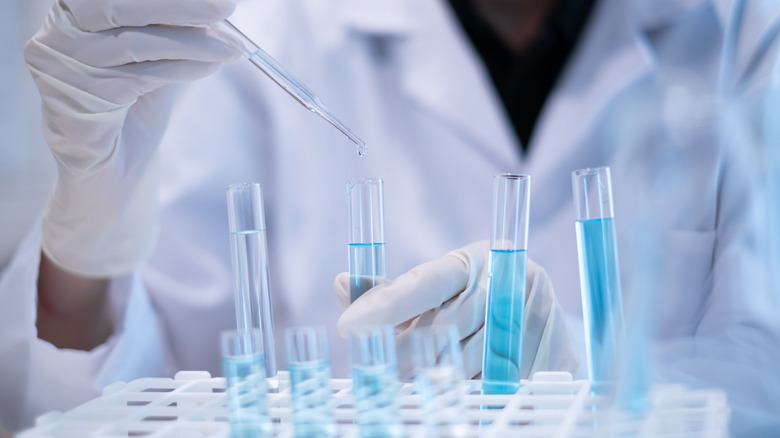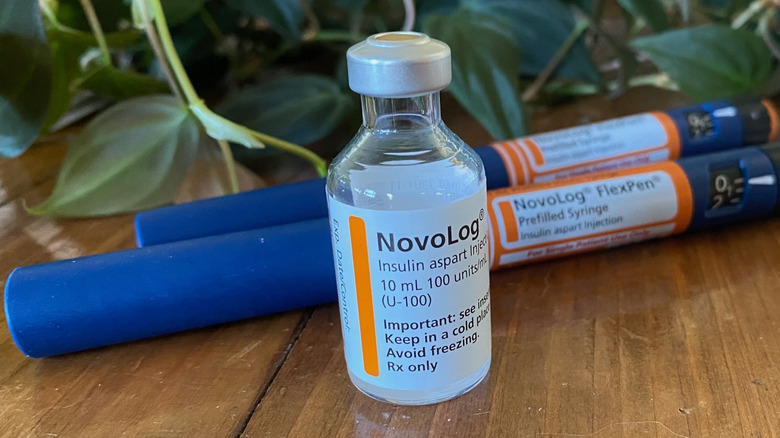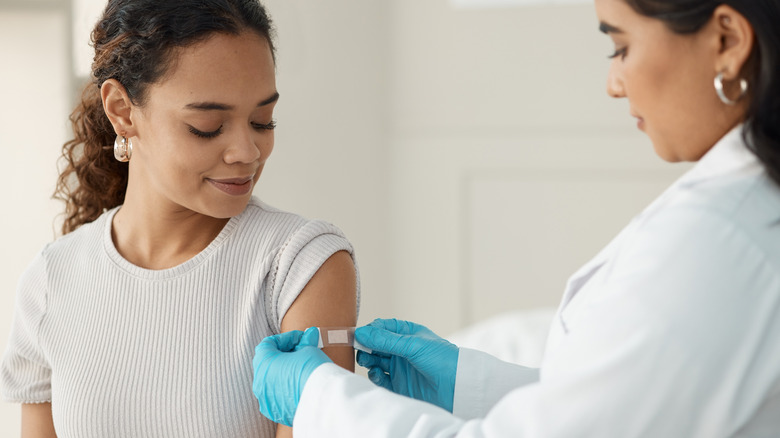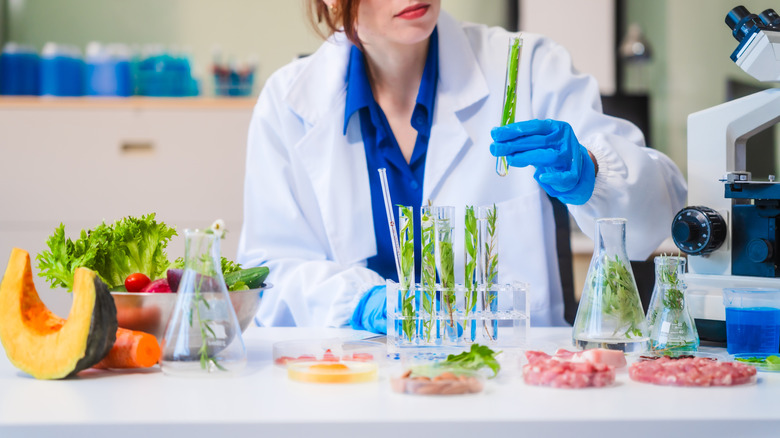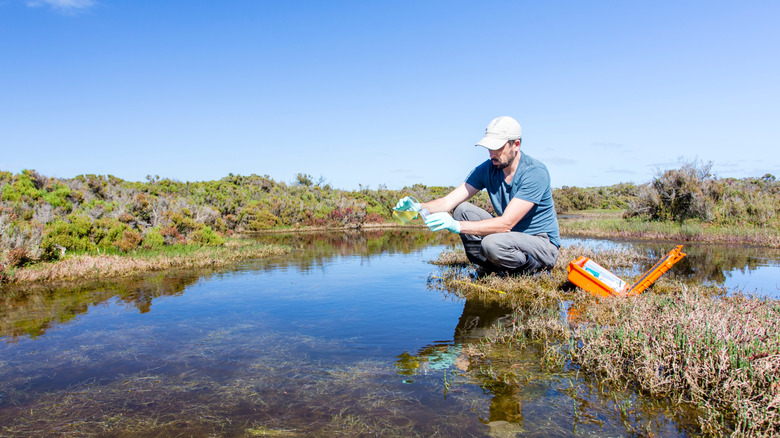5 Ways Recombinant DNA Technology Has Changed Lives
Scientists are always looking for ways to better human lives, and the use of recombinant DNA (rDNA) is one of their methods. Like with anything, though, there are pros and cons to rDNA technology. Among the cons are ethical concerns regarding the construction of rDNA molecules — which involves the combination of genetic material from different species — and the potential hazards of their introduction into the world. To understand the pros and how rDNA has changed people's lives, it's important to learn more about how rDNA is made.
The invention of rDNA technology started in 1968 with the discovery of restriction enzymes — bacteria-produced proteins that divide foreign DNA at specific sites to eliminate infectious organisms. After further discoveries and improvements in the following years, the first reproduction of rDNA occurred in 1973. The process of making rDNA involves isolating genetic material, cutting DNA in a specific spot, joining a different DNA fragment at the cut spot, and inserting the newly combined DNA into a host cell where it reproduces. The fragment used to create rDNA can come from any eukaryotic species (organisms that have clearly defined nuclei), whether it's bacterial, fungal, mammalian, or human.
Essentially, splicing DNA like this can be used to clone healthy cells that can then be used to replace unhealthy cells. It can also be used to imbue the host cells with useful abilities, like toxin production or drug resistance. With the capacity to be used for good, rDNA has changed lives throughout the medical, agricultural, and environmental sectors.
Treating and curing illnesses
The management and treatment of health problems might be the most well-known way that rDNA has been useful in the medical industry. For example, it can be used in gene therapy to repair genetic mutations that cause genetic diseases. Recombinant DNA can treat bleeding disorders, fight cancers, and enhance reproduction treatments as well.
Most notably, however, DNA splicing is used in biotechnology to create insulin (a hormone that's essential for life) for people with diabetes whose bodies don't produce enough on their own. Cows and pigs were the primary sources of insulin before the 1980s, but these sources weren't hypoallergenic for everyone. In 1982, the FDA approved Humulin, the first modern insulin drug. This breakthrough was developed by Lilly and Genentech and was also the first recombinant drug to receive FDA approval.
Another common application in managing people's health is with the production of human growth hormones by rDNA technology. When the pituitary gland — a gland at the base of the brain that controls the release of hormones and the function of other glands — doesn't work like it should, it may not release enough human growth hormone for someone to grow properly. Recombinant human growth hormone can be used to treat this deficiency.
Preventing the spread of diseases and viruses
Vaccines do more than protect the lives of individuals; they protect entire communities from infectious diseases. And, if you have ever wondered how scientists create vaccines , rDNA is one method. The first time that researchers used rDNA technology for vaccine development was in 1986 against the hepatitis B virus (HBV), and the same vaccine is used today to continue protecting the masses from HBV, which is carried by an estimated 296 million people around the world.
For the second-generation HBV vaccine, the expression of recombinant hepatitis B surface antigen (HBsAg) protein is developed in yeast or mammalian cells that contain the surface gene of the virus. After purification, these proteins are nearly identical to the HBsAg extracted from carriers and allow scientists to produce an unlimited supply of such vaccines, such as Engerix-B and Recombivax-HB, for global distribution. Despite the success of the recombinant HBV vaccine, rDNA technology still hasn't been widely used for a lot of vaccines. However, it's part of the process in making the Oxford-AstraZeneca vaccine to reduce the spread of COVID-19, which has been administered since 2021.
Additionally, rDNA has been used for the influenza vaccine Flublok Trivalent, which was licensed in 2013. This vaccine and its upgrade (Flublok Quadrivalent, approved in 2016) are two of only three flu vaccines that don't use chicken eggs or the flu virus itself to protect against the virus. As a result, manufacturing the vaccines is faster and prevents the possibility of mutations occurring. Either Flublok vaccine is preferred for people ages 65 and older because studies suggest that they're more effective than other standard influenza vaccines.
Enhancing agriculture and crops
Aside from changing lives directly through health management and disease prevention, rDNA has many uses in agriculture to improve the food supply. This process involves inserting a specific stretch of foreign DNA into the cells of a plant, which changes the proteins produced by its genes and, therefore, changes the characteristics of the plant. These plants are often referred to as genetically modified organisms or bioengineered foods. The tomato was the first crop to undergo genetic modification in 1994, and the result was delayed ripening and prolonged flavor. Since then, rDNA has been used for many other crops. In fact, 88% of corn and 93% of soybeans in the United States are made this way.
The goals of using rDNA technology in agriculture are to increase the number of crops that grow from a single plant, make the plants more resilient to pests, strengthen the plants' seeds, and grow larger crops. For instance, crops modified to express the Bacillus thuringiensis bacterial gene can produce a protein that's toxic to certain insects, which reduces the need for hindering pests with harmful insecticides. Another example is golden rice, which is a modified rice variety that contains beta-carotene to ameliorate vitamin A deficiency in certain populations. Meanwhile, corn, soybean, and other so-called Roundup Ready crops are made to resist glyphosate (the active ingredient in Roundup herbicide) so that farmers can more effectively control weeds without damaging their crops.
Improving the preservation and manufacture of foods
In addition to changing our food, rDNA has changed food processing via the enhanced production of enzymes. Amylases, serine proteases, and glucose oxidase are recombinant enzymes that play a vital role in preventing the growth of microorganisms that spoil food, as well as in preserving and processing foods. When it comes to manufacturing foods, similar enzymes created through the use of rDNA technology can be used to improve the efficiency of food production and the taste of certain products. For instance, they are used in the commercial processing of starches into sugars, which is the process used to make high-fructose corn syrup.
One of the most interesting ways that recombinant enzymes are used, though, is in the production of cheese. Traditionally cheese is made using an enzyme called rennet, which is extracted from calf stomachs. Rennet contains 10% pepsin and 90% chymosin (rennin), both of which are protease enzymes that clot milk. So, the difference between rennin and rennet is that rennin is naturally occurring, while rennet is a commercial form. Through the use of rDNA, scientists can extract the gene responsible for producing chymosin from a calf and embed it into a microbe to reproduce more. Scientists have been generating pure, recombinant chymosin this way since 1990, and it has made the process of making cheese more efficient and even vegetarian friendly since the chymosin is genetically engineered.
Solving soil and water pollution problems
Another indirect way that rDNA has changed lives is through its use in bioremediation. With hazardous contaminants affecting Earth in many ways, scientists have been hard at work developing new soil pollution remedies and water pollution solutions to protect human and environmental health. One of these methods is the development of genetically engineered microbes (GEMs) — such as bacteria, fungus, and yeast — by using rDNA technology to change them in some way. These GEMs are cheaper and safer to produce than alternatives, as well as more powerful than using naturally occurring microorganisms. Plus, they could be faster at degrading pollutants because they can adapt to new ones quickly.
For example, natural microbes aren't always capable of breaking down dangerous and stubborn chemicals. Recombinant E. coli and Pseudomonas putida can break down some of these for wastewater management when scientists introduce the proper plasmids. Plasmids, double-stranded DNA molecules, are commonly used as DNA carriers to provide the characteristics necessary for the host cell to achieve its genetically modified purpose, and there are four classifications used to address various environmental contaminants. Also, genetically modified E. coli can be used to remove mercury (a dangerous heavy metal) in sediment, soil, and water, as well as extract nickel (possibly the most stubborn toxin) from water.
